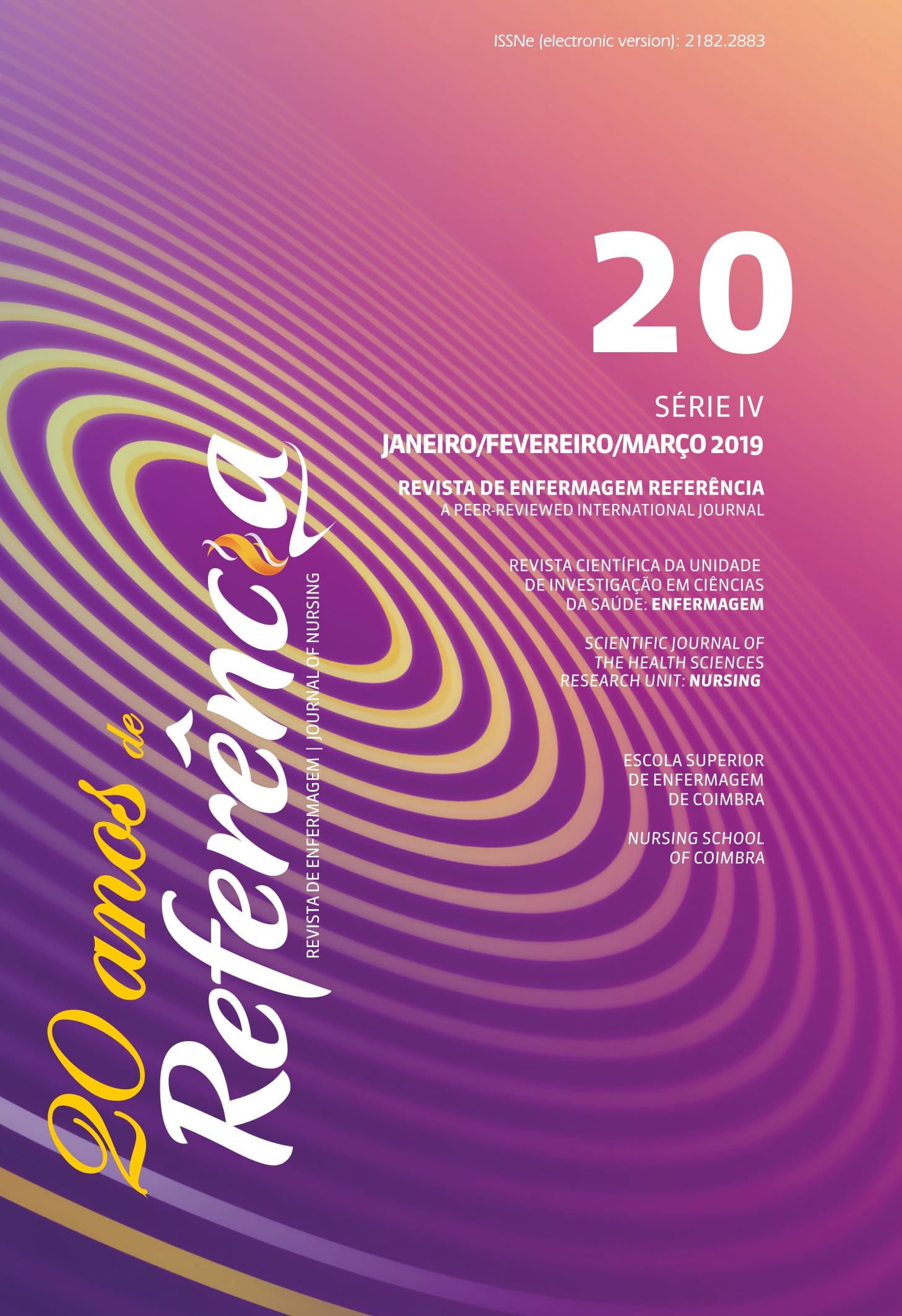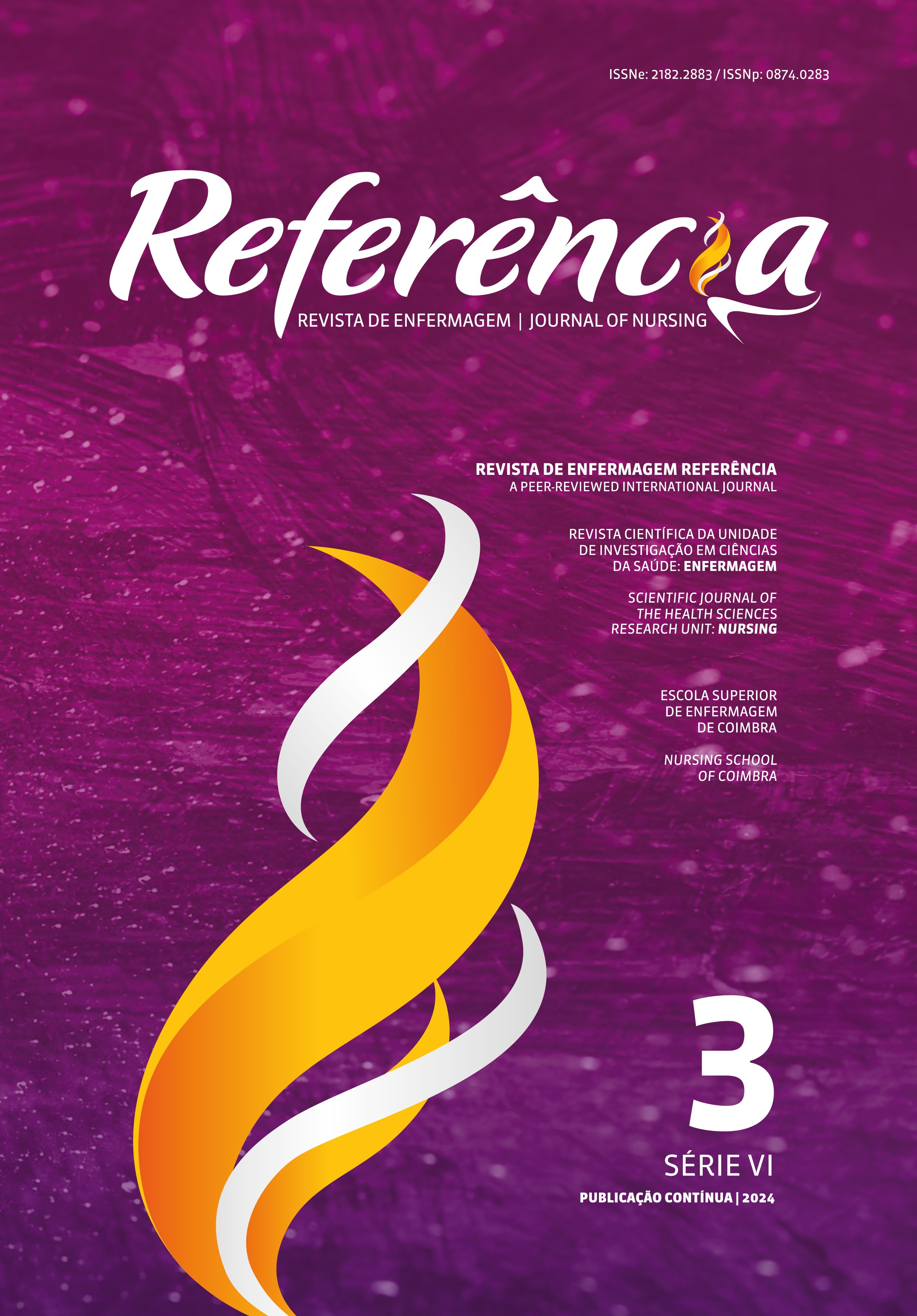Functional dependence at discharge from the intensive care unit: relevance for rehabilitation nursing
DOI:
https://doi.org/10.12707/RIV18084Keywords:
rehabilitation, self-care, muscle weakness, functional recoveryAbstract
Background: Stays in the intensive care unit can cause adverse effects that lead to situations of functional disability, which persist for a long time. Early rehabilitation can prevent or limit such situations.
Objectives: To characterize the functional level and dependencies at discharge from intensive care. To assay the timing for initiating rehabilitation nursing interventions.
Methodology: Descriptive/exploratory study, quantitative method, in a sample of 30 patients.
Results: Average of Medical Research Council value was 27 (first evaluation) and 38 (at discharge). The mean value of the Functional Independence Measure, in the area of self-care, mobility / transfers was 2. The first intervention of rehabilitation nursing occurred, on average, on the 10th day and the patient got out of bed after 13 days.
Conclusion: At discharge, there were high levels of functional dependence at the level of basic self-care and mobility/transfers, and their characterization should be improved for the continuity of rehabilitation care. Early mobilization of critical patients is necessary.
Downloads
References
Appleton, R., Kinsella, J., & Quasim, T. (2015). The incidence of intensive care unit-acquired weakness syndromes: A systematic review. Journal of the Intensive Care Society, 16(2), 126-136. doi:10.1177/1751143714563016.
Chlan, L., Tracy, M., Guttormson, J., & Savik, K. (2015). Peripheral muscle strength and correlates of muscle weakness in patients receiving mechanical ventilation. American Journal of Critical Care, 24, e91-e98.doi:10.4037/ajcc2015277
De Jonghe, B., Sharshar, T., Lefaucheur, J., Authier, F., Durand-Zaleski, I., Boussarnar, M., … Bastuji-Garin, S. (2002). Paresis acquired in the intensive care unit. The Journal of the American Medical Association, 288(22), 2859-2867.
Desai, S., Law, T., & Needham, D. (2011). Long-term complications of critical care. Critical Care Medicine, 39(2), 371-379. doi:10.1097/CCM.0b013e3181fd66e5
Fan, E., Dowdy, D., Colantuoni, E., Mendez-Tellez, P.,Sevransky, J., Shanholtz, C., … Needham, D. (2014). Physical complications in acute lung injury survivors: A 2-year longitudinal prospective study. Critical Care Medicine, 42(4), 849-859. doi: 10.1097/CCM.0000000000000040.
Hermans, G., & Van den Berghe, G. (2015). Clinical review: Intensive care unit acquired weakness. Critical Care, 19(274). doi:10.1186/s13054-015-0993-7
Herridge, M., Cheung, A., Tansey, C., Matté, A., Tomlison,G., Diaz-Granados, N., … Cheung, M. (2011). Functional disability 5 years after acute respiratory distress syndrome. The New England Journal of Medicine, 364(14), 1293-1304. doi: 10.1056/NEJMoa1011802.
Hill, D., Fowler, R., Pinto, R., Herridge, M., Cuthbertson, B., & Scales, D. (2016). Long-term outcomes and healthcare utilization following critical illness: A population-based study. Critical Care, 20(76). doi:10.1186/s13054-016-1248-y
Hodgson, C., Bellomo, R., Berney, S., Bailey, M., Buhr, H., Denehy, L., … Webb, S. The TEAM Study Investigators. (2015). Early mobilization and recovery in mechanically ventilated patients in the ICU: A bi-national, multi-centre, prospective cohort study. Critical Care, 19(1), 81. doi:10.1186/s13054015-0765-4.
Hodgson, C., Stiller, K., Needham, D., Tipping, C., Harrold, M., Baldwin, C., … Webb, S. (2014). Expert consensus and recommendations on safty criteria for active mobilization of mechanically ventilated critically ill adults. Critical Care, 18(658). doi: 10.1186/s13054-014-0658-y
Hosein, F., Roberts, D., Turin, T., Zygun, D., Ghali, W., & Stelfox, H. (2014). A meta-analysis to derive literatures-based benchmarks for readmission and hospital mortality after patient discharge from intensive care. Critical Care, 18(715). doi: 10.1186/s13054-014-0715-6.
Mehrholz, J., Pohl, M., Kugler, J., Burridge, J., Mückel, S., & Elsner, B. (2015). Physical rehabilitation for critical illness myopathy and neuropathy (review). Cochrane Database of Systematic Reviews, CD010942. doi: 10.1002/14651858.CD010942.pub2.
Puthucheary, Z., Rawal, J., McPhail, M., Connolly, B., Ratnayake, G., … Montgomery, H. (2013). Acute skeletal muscle wasting in critical illness. The Journal of the American Medical Association, 310(15), 1591-1600. doi:10.1001/jama.2013.278481
Steenbergen, S., Rijkenberg, S., Adonis, T., Kroeze, G., van Stijn, I., & Endeman, H. (2015). Long-term treated intensive care patients outcomes: The oneyear mortality rate, quality of life, health care use and long-term complications as reported by general practitioners. BMC Anesthesiology, 15(142). doi:10.1186/s12871-015-0121-x.
Unroe, M., Kahn, J., Carson, S., Govert, J., Martinu, T., Shathy, S., … Cox, C. (2010). One-year trajectories of care and resource utilization for recipients of prolonged mechanical ventilation. Annals of Internal Medicine, 153(3), 167-175. doi: 10.7326/0003-4819-153-3-201008030-00007
Wieske, L., Dettling-Ihnenfeldt, D., Verhamme, C., Nollet, F., van Schaik, I., Schultz, M., …van der Schaaf, M. (2015). Impact of icu-acquired weakness on posticu physical functioning: A follow-up study. Critical Care, 19(196). doi:10.1186/s13054-015-0937-2
Winkelman, C., Sattar, A., Momotaz, H., Johnson, K., Morris, P., Rowbottom, J., … Levine., A. (2018). Dose of early therapeutic mobility: Does frequency or intensity matter? Biological Research for Nursing, 20(5), 522-530. doi:10.1177/1099800418780492























